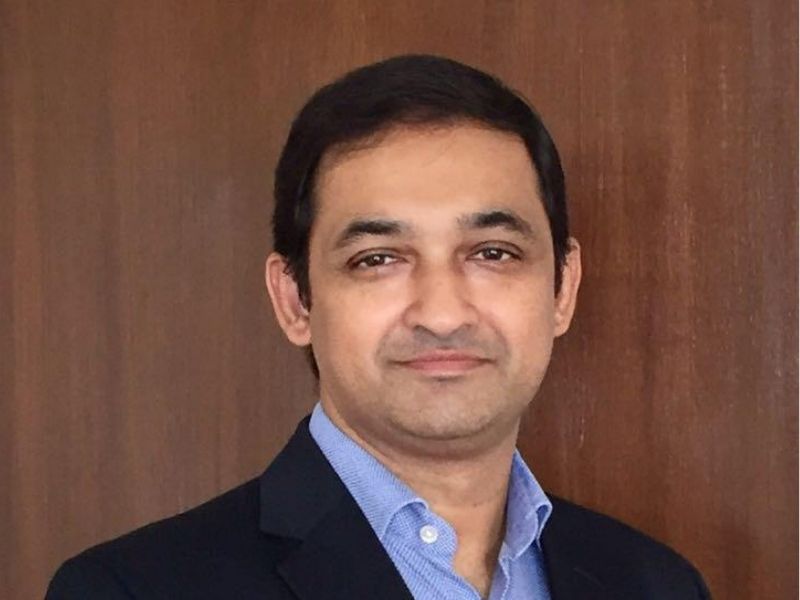 -By Sumanta Datta, Managing Director, India at Oxford University Press
-By Sumanta Datta, Managing Director, India at Oxford University Press
The education landscape in India has witnessed a tectonic shift this past year with the impact of the pandemic and the devastating second wave that hit closer to home. As schools and colleges across the country were suddenly bereft of the usual student chatter and in-person classroom lectures, India embraced a new age of remote learning with noteworthy speed and commitment. Curriculums were tweaked almost overnight, teachers upskilled, and students adapted to the ‘new normal’. What one assumed was a ‘quick fix’, has become the norm for the past year and a half, and it seems it is here to stay with many learning institutions adopting the hybrid model. Thus, digital learning will continue to be the overarching trend as we enter the new year, as well as learning gaps such as assessment effectiveness and curriculum efficacy taking centre stage.
WIDENING DIGITAL DIVIDE AND LEARNING GAPS:
While there has been a quantum leap in the impact and reach of digital education, access to the best content has not been inclusive. For example, in a recent research report published by Oxford University Press (OUP) titled ‘Addressing the Deepening Digital Divide’, 70 per cent of teachers said the most disadvantaged students lost learning due to limited or no access to digital devices. Many often had to share a device within the family which limited the opportunity for individual learning. Digital education platforms are expensive and out of reach for many families. Equally, digital competency is a significant challenge, with 56 per cent of the teachers in OUP’s report citing that a lack of digital skills on the part of both learners and educators prevented their effective use of digital resources and acted as a barrier to learning. Digital content and teaching capabilities vary greatly between private and public schools, thereby, putting public school students at a significant disadvantage. In addition, the lack of quality vernacular content, widens the divide between students in the top few metro cities, from those in the smaller urban and rural communities. There is an urgent need for the education eco-system to come together to address these gaps, so that all learners can leverage the opportunity of digital learning on an equal footing.
MORE PERSONALISATION AND IMMERSIVE LEARNING EXPERIENCES:
Technologies such as Augmented and Virtual Reality (AR/VR) and Artificial Intelligence (AI) were already on an upswing, but the pandemic has accelerated the pace of their adoption. As classrooms shift to computer screens, there is more demand for aides that allow better engagement and visualisation of concepts. These aides help students to immerse themselves in a more engaging learning environment that encourages them to explore new concepts further and apply them better in real life situations. Especially with regards to higher education subjects such medicine, design, or even engineering, technologies such as VR/AR have been a blessing with remote learning serving as the only mode of education throughout the pandemic. Given the world’s need for creative thinkers and problem-solvers, India’s education curriculum will have to evolve and adopt new technologies to stay up-to-date and relevant, to match the expectations of our changing world.
NEW ASSESSMENT MODELS AND TECHNIQUES TO COMPLEMENT DIGITAL-HEAVY CURRICULUMS: While India shifted to the online mode of education, there were, and continue to be, significant gaps with regards to the outcomes. As students gradually move back to campuses and education institutions establish a hybrid approach, the next few months will be crucial in order to assess the learning gaps created as a result of the online model. A more personalized and customized assessment model will be required to assess individual students across both, the private and public school systems. Oxford STAR is one such assessment solution that is intended to help students, teachers, parents, and school administrators profile students’ personality, scholastic ability, and 21st-century competencies and skills, empowering educators with a deep and flexible reporting system to review the teaching-learning processes.
HELPING TEACHERS COPE IS AN OPPORTUNITY FOR PERMANENT IMPROVEMENT:
As teachers adopted a new medium of instruction overnight with tremendous resilience, there is a great need for regular, well-curated training programmes and workshops to help them embrace the change. With VR, AR, and AI, being increasingly integrated into classrooms and regular curriculums, we need to see a shift from upskilling training to ‘always-skilling’ for teachers. Innovative new learning platforms will constantly emerge to improve both the delivery and assessment of education, so it’s crucial that teachers are always equipped with the skills needed to leverage these cutting-edge tools in a seamless and effective manner. Over the last one year alone, Oxford University Press in India has conducted over 1100 such trainings and workshops helping more than 100,000 teachers across the country. There is still a great amount of effort to be made in this area, and all of us in the sector must together continue to support it.
MENTAL WELLNESS A PRIORITY IN DESIGNING NEW CURRICULUMS:
The one thing that became apparent during the pandemic was the impact of blurred lines between our offline and online worlds on mental health. The importance of exercising ‘pause’ has never been more relevant, and educational institutions are increasingly making mindful living and mental wellness a priority as they design curriculums for all age groups. Mental wellness is integral to ensuring positive learning outcomes, and emphasis on the same will only continue to increase with innovative education solutions that aim to inculcate wellbeing as part of the daily routine.
The education sector is at an inflection point and 2022 will witness accelerated adoption of EdTech solutions, as it forces us to question traditional methods, pedagogies, and mindsets. The pandemic and current hybrid model have already set the wheels in motion. The seamless integration of these solutions within the existing print and classroom teaching methods will determine its future success in the Indian context.
Also read: Digital learning platforms that are helping maintain continuity in skill development























